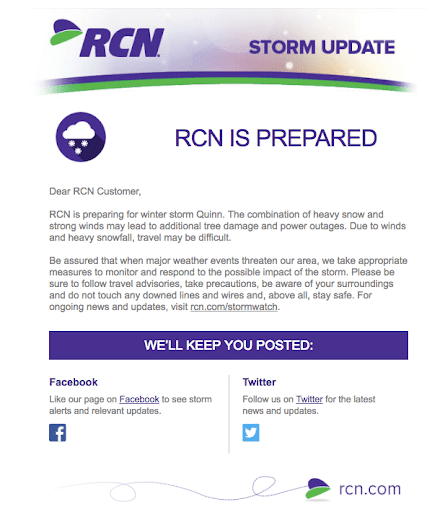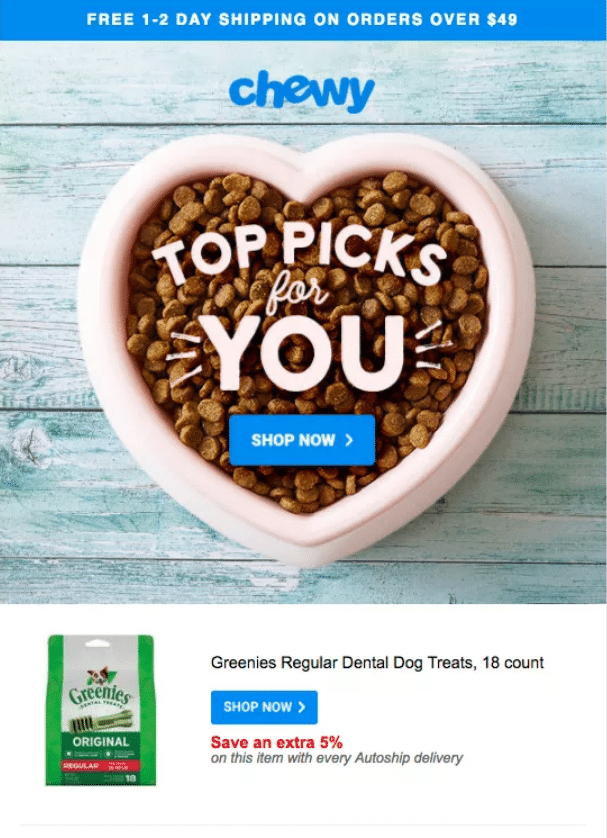What is direct marketing?
Direct marketing is any marketing where a company directly addresses a specific, targeted audience, without consulting any third party. In other words, it’s a marketing campaign without an agency, partner, distributor, or mass media outlet involved, where a brand personally sends a message to certain consumers.
Every direct marketing campaign aims at motivating a targeted group of people to take a measurable action, such as making a purchase, visiting a brand website, or referring friends. This target market may include people within a given demographic, people living in a certain location, or people who have another specific need.
Direct marketing is the opposite of indirect marketing, which involves mass campaigns that are randomly broadcast to large audiences, without marketers directly contacting customers.
But how can you build a direct marketing campaign for yourself? And what are the benefits and drawbacks of direct marketing techniques? We’ll answer these questions and more in our in-depth guide to direct marketing.
Direct marketing channels (Types of direct marketing)
What channels can a company use for direct marketing? One of the earliest forms of direct marketing was the targeted sending of store catalogs (direct mail campaigns). Stores would send mail order catalogs to people who lived too far away to purchase from their physical location, but who still fit the prime demographics for their products.
Today, direct marketing is most commonly done via curated emails. Direct email marketing messages are tailored to the demographics, needs, and preferences of specific audiences, rather than being sent out en masse. Some direct marketing emails are even focused solely on one customer, with specific product recommendations curated to that customer.
Direct marketing can also be done through other company-owned channels, like snail mail (direct mail marketing), phone calls (telemarketing), or SMS. And even though a company doesn’t own a social network, their social media marketing is still considered a direct marketing effort. After all, a company has control of their own social profile, and uses it to address followers without involving a middleman.
Direct marketing may seem fairly broad on the surface, but it does have many essential components. We cover them below.
Essential components of direct marketing
The most vital feature of a direct marketing campaign is its success is always measurable. You need to set goals based on a set of metrics you plan to track. You’ll also need a way to track these metrics and how consumers respond to the campaign.
For example:
- If you run an email marketing campaign aimed at generating website traffic, use UTM tracking so you can trace visits back to the email.
- If your goal is to generate purchases, think about offering prospective customers campaign-based discount codes, or using a tracking cookie or pixel.
- If you start a referral campaign, use referral software to easily track which customers have shared with their friends!
For the greatest success, direct marketing campaigns should also be targeted to a narrow audience segment. Targeting as narrow a segment as possible makes it easier to become familiar with that audience segment, and personalize your message so it resonates with them.
If a direct marketing campaign is aimed at too broad of an audience, the message might feel too spammy or annoying to people who receive it. And if that happens, you’re more likely to end up in a junk mail inbox, have your mailing thrown out, or even lose subscribers – not worth it for the proportionately few subscribers you gain.
Don’t take that chance. Rather, choose a narrow target audience segment whose actions you’d potentially benefit from most, or a segment already likely to convert. You could segment your audience by age, location, family status, gender, known preferences, or known needs. The best segments usually involve more than one characteristic. For example, busy first-time mothers looking for time-saving hacks.
Research the segment’s needs and preferences, and how your company can satisfy them. Then carefully tailor your campaign accordingly. Here are some examples:
- A bank launches a referral program by promoting the program to its most loyal customers first.
- Walmart sends an email featuring baby supplies to first-time parents.
- Kohl’s sends an off-to-campus direct mailer about dorm needs to families of college students.
Advantages of direct marketing
Direct marketing offers plenty of advantages over campaigns that involve a third party. The main benefits of direct marketing are personalization for an audience segment and control of your data, but they don’t end there. Here’s a detailed overview of the main direct marketing advantages.
Direct marketing is a highly segmented strategy. Compared to a generic campaign, targeting your marketing to a narrow audience often yields better results. You can create extremely detailed messages for a segment based on age, location, interests, browsing habits, and more.
The personalized messaging makes that audience segment more likely to perform the action you’re promoting. You can also choose an audience you already know is interested in your product, rather than wasting time and money on irrelevant eyes who likely won’t be interested in the offer.
Direct marketing helps build relationships. The personalized messaging of direct marketing, and the fact you deliver this messaging right to the customer, helps you build customer relationships and increase customer loyalty.
Plus, the information you gather from this personalized campaign can help you refine other messaging targeted at key existing customers. For example, the response you get from your direct marketing campaign can help you understand what rewards and messaging will motivate your customers most for your loyalty program or referral program.
Direct marketing usually allows you to launch a campaign more quickly. After all, you don’t have to depend on a third party to craft your message, ask for them to share it, or wait for their feedback. Some direct marketing campaigns that involve digital marketing, like email and social media ones, can be built and launched within hours.
Direct marketing is cost-effective. You don’t have to worry about paying a middleman (such as a TV network or influencer) to create or distribute your message. You’re in total control of your campaign budget. If you make use of the data you collect and carefully personalize your campaign, you’ll be able to achieve results at a fraction of the cost of third-party advertising. Direct marketing is especially advantageous for smaller companies who can’t afford mass media coverage.
Direct marketing is data-driven. Since you’re constantly tracking your campaign’s success, you can rapidly check results, make educated campaign decisions in real time, and quickly pivot if the metrics aren’t meeting your goals. You’ll be able to refine future campaigns and messaging based on what has proven to deliver the best results.
Direct marketing campaigns also make it easier to gather and track this all-important data, because all of the data is within your brand’s control. You don’t have to worry about getting the data from a middleman, or getting third-party approval to change the campaign – you can instantly access and act on the data whenever you want.
Disadvantages of direct marketing
Even with all of these advantages, direct marketing still has some significant drawbacks.
With direct marketing, you don’t have the network or support of a third party. Often, having your advertising on a media outlet your audience sees as reputable can boost your image in the eyes of your audience.
Despite the cost of advertising on bigger outlets, this image boost often outweighs the expense. Having your name on Forbes, NBC, or the New York Times website can be invaluable. Even working with a smaller outlet your audience trusts can help sway prime potential customers towards trying out your brand.
Remember, influencers, ambassadors, channel partners, distributors, and other partners also count as third parties. Any campaign that utilizes these partners is not direct marketing. Sometimes, the benefits of an advocate’s or partner’s backing may be worth working with a third party.
How to build an effective direct marketing campaign
Now that we’ve reviewed the essentials, advantages, and disadvantages of a direct marketing campaign, let’s go through the steps of how to build a successful direct marketing campaign. These steps apply to direct marketing strategies on all channels.
- Start with segmentation. Choose a narrow audience segment, using the tips we’ve covered in the “Essential Components” section above. Research their wants, needs, and preferences. A buyer persona template will help you gather this information.
- Decide on the brand-building action you want the audience segment to take. Make a purchase? Visit your website? Refer a friend?
- Based on the desired customer action, set a measurable goal and metric to track the success of your campaign. For example, will you track the number of purchases made from a campaign link in a given month? The number of successful referrals that result from the campaign? The number of website visits that result from the campaign?
- Determine exactly how you’ll track the success of your campaign. Some common ways are a code, pixel, a UTM tag, or even a specialized software program. This might take more effort and thinking if your campaign isn’t digital, but you can always offer a discount code for customers to use on your website that still enables tracking. If you plan to track more than one metric (for example, how customers respond and overall sales), be sure to pick the right tracking methods for all metrics.
- Choose the medium you think will best help deliver your message to your audience and accomplish your goal. This can be email, direct mail, social media, phone calls, text message, and more.
- Based on the selected medium, gather contact information of those in your audience segment. You don’t necessarily need your contacts to opt into your campaign (freely giving you their contact information themselves). However, you’ll have more success with contacts who have already opted in through a lead generation campaign. After all, they’re already willing to receive messages from you, and you already have an idea of their needs and preferences.
- Develop the campaign itself. From carefully written messaging, to select images, to the call-to-action, every part of your campaign should be tailored to convince your segmented audience. Direct marketing campaigns don’t leave anything to chance!
- Launch the first version of your campaign, and test how well your audience responds. Consider A/B testing the campaign, with variations on messaging, imagery, or calls-to-action, to determine what better resonates with your audience segment.
- Examine the data from your campaign to determine what works well and what needs improvement. Carry your findings forward to improve the campaign, or to launch a new campaign for the same audience. Regularly examine this data, but make sure to give a campaign enough time to see success before making any changes.
Direct marketing examples
Before we wrap things up, here are some examples of unique direct marketing campaigns to inspire your own.
1. RCN
In this quick direct marketing email, telecommunications company RCN proactively reassured customers in the path of winter storm Quinn that the company was prepared to respond and quickly restore service if need be. This showed that RCN was ready to respond to the needs of its customer base, while encouraging customers to keep the brand top of mind.
2. Chewy
This email from Chewy is personalized to individual customers, based on products they’ve purchased before. The call-to-action buttons are outfitted with tracking pixels, so Chewy can tell when the customer purchases the recommended products directly from the email.
3. Earth Hour
Earth Hour mailed these candle boxes to CEOs and other business leaders, encouraging corporations to participate in the Earth Hour campaign of switching off all lights and electronic devices for one hour. When business leaders pulled the candle out of the box, it looked like the office building on the box switched off all of its lights.
According to Ads of the World, this campaign helped increase corporation support for Earth Hour by 260%, compared to the year before this campaign was used.
Wrapping things up
Whichever direct marketing channel you choose, it’s important to have a firm plan for your campaign. Make sure you’ve carefully segmented your audience, and created your messaging and images to be something they’ll respond to.
Knowing what metrics you plan to track is also key, since being able to measure the success of a campaign is integral to direct marketing. When it comes down to it, direct marketing offers plenty of advantages, but only when done right.







